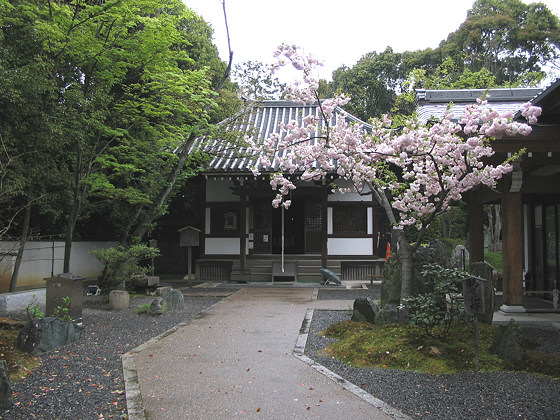Sennyu-ji Temple, Kyoto
Founded in 1218 by the monk Shunjo, Sennyu-ji was for centuries a mortuary temple for aristocrats and the imperial house.
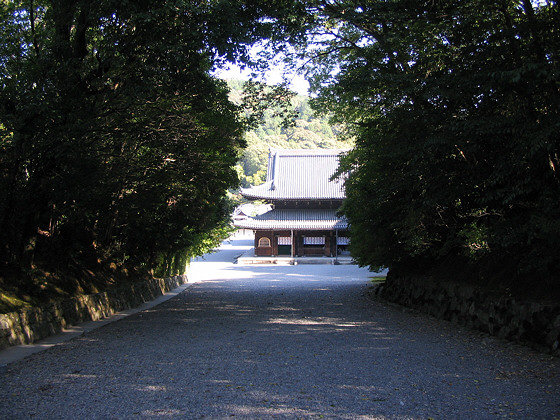
Butsuden at Sennyuji Temple.
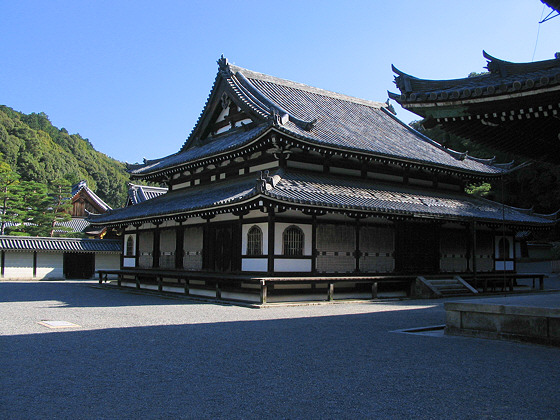
Shariden at Sennyuji Temple.
The tombs of Emperor Komei and Emperor Go-Horikawa are located here.
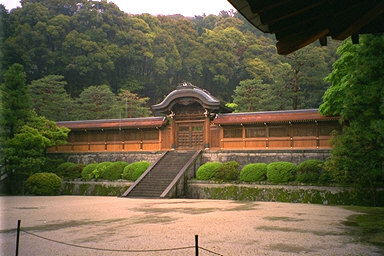
Sennyuji Temple's imperial mausoleum.
The temple takes its name from a spring nearby what is thought to be a ninth-century hermitage of Kukai, founder of the Shingon sect. Sokujoin, one of Sennyuji's subtemples, is dedicated to the worship of Amida. Its main hall contains late Heian-period carvings of Amida surrounded by 25 attendant bodhisattvas.
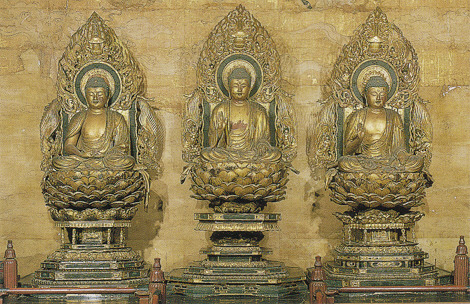
Shaka flanked by Amida and Miroku in the Butsuden of Sennyuji Temple.
Just inside the temple's main gate is a small Kannon-do containing a figure of Yang Kwei-fei as a manifestation of Kannon. Mentioned several times in The Tale of Genji, the Yang Kwei-fei affair refers to a T'ang Dynasty romance between China's Emperor Hsuan Tsung and his favourite consort.
It is said that when Yang Kwei-fei died, the emperor missed her so much that he had her sculpture made in the image of Avalokitesvara (Kannon), which was brought to Sennyu-ji Temple in Kyoto by the priest Tankai in 1255. The image is known as the Yokihi Kannon or Empress Yang-Avalokitesvara.
